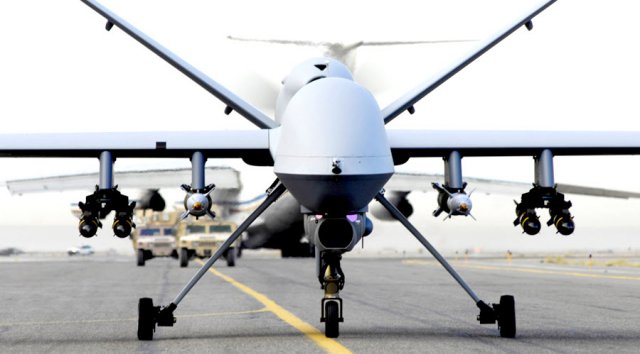The US Air Force (USAF) has revealed details of the roles undertaken by the service’s General Atomics Aeronautical Systems Inc (GAASI) MQ-1 Predator and MQ-9 Reaper unmanned aerial vehicles (UAVs) in liberating the Syrian city of Manbij from the Islamic State.
Pilots and sensor operators assigned to squadrons across the 432nd Wing (WG) and the 432nd Air Expeditionary Wing (AEW) provided close air support (CAS) and intelligence, surveillance, and reconnaissance (ISR) needed for coalition partners to drive Islamic State fighters out of the city in 2016, the USAF disclosed in an article posted on its website on 6 April.
“From May to August 2016 … MQ-1Bs and MQ-9s flew nearly 500 sorties from … [ground control stations located in] the continental United States,” said Colonel Case Cunningham, the 432nd WG/432nd AEW commander, adding, “Those sorties resulted in nearly 11,000 hours of persistent attack and reconnaissance in direct support of our partnered forces on the ground.”
During the Manbij offensive, Predators and Reapers (pictured) employed over 300 Hellfire air-to-surface missiles, which accounted for approximately 40% of the total kinetic strikes conducted by coalition aircraft during the two-month battle.
As noted by the USAF, operating over a built-up area provided particular challenges, “It was significantly difficult in the end because there were snipers and improvised explosive devices in the city centre, making it hard for the [Syrian Democratic Forces – SDF] to advance,” 1st Lieutenant Gregg, a 432nd WG Reaper pilot was quoted as saying. “We had to maintain very specific look angles down alleys while maintaining a close eye for civilians. That required very precise strikes and MQ-1 and MQ-9s were able to fulfil that role.”
This need for the UAV pilots and sensor operators to safeguard against incurring civilian casualties extended to the SDF also, with Lieutenant Colonel Ronnie, a 432 WG squadron commander, saying,
“One of the things I saw in Manbij that was truly unique was the proximity we were finding a lot of the targets to friendly forces. They were sometimes within 100 m and sometimes inside of 50 m.”
Source: IHS Jane’s 360

